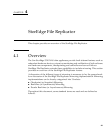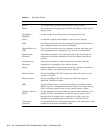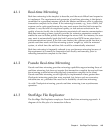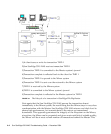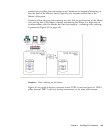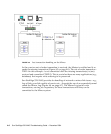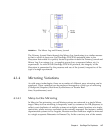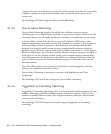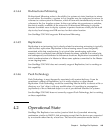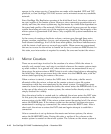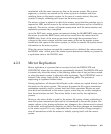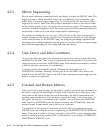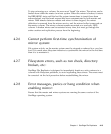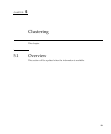
Chapter 4 StorEdge File Replicator 4-9
4.1.4.4 Bi-directional Mirroring
Bi-directional Mirroring refers to the ability for systems at sister locations to mirror
to each other. For instance, a system in Los Angeles may be configured to mirror its
volumes to a sister system in Houston, which in turn and simultaneously mirrors its
volumes to the Los Angeles system. In the event either site experiences a problem,
the data is readily available at the sister site. Bi-directional Mirroring is popular
because it enables users to deploy systems at partner locations which provide both
day-to-day local storage and DR services for their sister location.
Sun StorEdge 5310 NAS supports Bi-directional Mirroring.
4.1.4.5 Replication
Replication is not mirroring, but is closely related to mirroring; mirroring is typically
used to effect replication. Replication in the mirroring arena is most frequently
associated with data warehousing. In a typical data warehousing replication
scenario, data is collected from multiple remote locations, collated at a central site,
and subsequently re-distributed to the remote locations. Replication is essentially the
initial synchronization of a Master to Mirror sans updates committed to the Master
on an ongoing basis.
Sun StorEdge 5310 NAS does not currently support Replication, but is working on
this capability.
4.1.4.6 Push Technology
Push Technology is most frequently associated with content delivery. It can be
considered a subset of Replication, as it is really selective or object-based
Replication. Push Technology would be something like the ability to denote a file or
directory as a 'hot' object, with any modification of it resulting in propagation
(replication) of the so-denoted object to a set of pre-defined locations or systems.
Sun StorEdge 5310 NAS does not currently support Push Technology, but is working
on these capabilities.
4.2 Operational State
StorEdge File Replicator is an active/passive block level journaled mirroring
mechanism, similar to RAID 1 disk mirroring except that the devices are connected
by a network rather than by a local bus. The network connection media itself is



